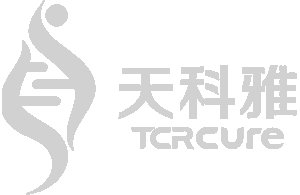1. “Resident memory T cells in tumor-distant tissues fortify against metastasis formation.”
Cell Rep 35, no. 6 (May 11, 2021): 109118. https://doi.org/10.1016/j.celrep.2021.109118.
Christian, Laura S., Liuyang Wang, Bryan Lim, Dachuan Deng, Haiyang Wu, Xiao-Fan Wang, and Qi-Jing Li.
2. “Conversion of effector CD4+ T cells to a CD8+ MHC II-recognizing lineage.”
Cell Mol Immunol 18, no. 1 (January 2021): 150–61. https://doi.org/10.1038/s41423-019-0347-5.
Robins, Elizabeth, Ming Zheng, Qingshan Ni, Siqi Liu, Chen Liang, Baojun Zhang, Jian Guo, et al.
3. “Peripheral eosinophil counts predict efficacy of anti-CD19 CAR-T cell therapy against B-lineage non-Hodgkin lymphoma.”
Theranostics 11, no. 10 (2021): 4699–4709. https://doi.org/10.7150/thno.54546.
Jia, Qingzhu, Diyuan Qin, Feng He, Qichao Xie, Zhitao Ying, Yajing Zhang, Yuqin Song, et al.
4. “Radiation-induced eosinophils improve cytotoxic T lymphocyte recruitment and response to immunotherapy.”
Sci Adv 7, no. 5 (January 2021). https://doi.org/10.1126/sciadv.abc7609.
Cheng, Jia-Nan, Wen Luo, Chengdu Sun, Zheng Jin, Xianghua Zeng, Peter B. Alexander, Zhihua Gong, et al.
5. “TCR repertoire and CDR3 motif analyses depict the role of αβ T cells in Ankylosing spondylitis.”
Ebiomedicine 47 (September 2019): 414–26. https://doi.org/10.1016/j.ebiom.2019.07.032.
Zheng, Ming, Xin Zhang, Yinghui Zhou, Juan Tang, Qing Han, Yang Zhang, Qingshan Ni, et al.
6. “Local mutational diversity drives intratumoral immune heterogeneity in non-small cell lung cancer.”
Nat Commun 9, no. 1 (December 18, 2018): 5361. https://doi.org/10.1038/s41467-018-07767-w.
Jia, Qingzhu, Wei Wu, Yuqi Wang, Peter B. Alexander, Chengdu Sun, Zhihua Gong, Jia-Nan Cheng, et al.
7. “Late-stage tumors induce anemia and immunosuppressive extramedullary erythroid progenitor cells.”
Nat Med 24, no. 10 (October 2018): 1536–44. https://doi.org/10.1038/s41591-018-0205-5.
Zhao, Lintao, Ran He, Haixia Long, Bo Guo, Qingzhu Jia, Diyuan Qin, Si-Qi Liu, et al.
8. “CD36 initiates the secretory phenotype during the establishment of cellular senescence.”
Embo Rep 19, no. 6 (June 2018). https://doi.org/10.15252/embr.201745274.
Chong, Mengyang, Tao Yin, Rui Chen, Handan Xiang, Lifeng Yuan, Yi Ding, Christopher C. Pan, et al.
9. “In Vivo Expansion and Antitumor Activity of Coinfused CD28- and 4-1BB-Engineered CAR-T Cells in Patients with B Cell Leukemia.”
Mol Ther 26, no. 4 (April 4, 2018): 976–85. https://doi.org/10.1016/j.ymthe.2018.01.022.
Cheng, Zhi, Runhong Wei, Qiuling Ma, Lin Shi, Feng He, Zixiao Shi, Tao Jin, et al.
10. “Glimpse of natural selection of long-lived T-cell clones in healthy life.”
Proc Natl Acad Sci U S A 113, no. 35 (August 30, 2016): 9858–63. https://doi.org/10.1073/pnas.1601634113.
Zhang, Baojun, Qingzhu Jia, Cheryl Bock, Gang Chen, Haili Yu, Qingshan Ni, Ying Wan, Qijing Li, and Yuan Zhuang.
11. “Inflammation-Dependent IL18 Signaling Restricts Hepatocellular Carcinoma Growth by Enhancing the Accumulation and Activity of Tumor-Infiltrating Lymphocytes.”
Cancer Res 76, no. 8 (April 15, 2016): 2394–2405. https://doi.org/10.1158/0008-5472.CAN-15-1548.
Markowitz, Geoffrey J., Pengyuan Yang, Jing Fu, Gregory A. Michelotti, Rui Chen, Jianhua Sui, Bin Yang, et al.
12. “MicroRNA-23a Curbs Necrosis during Early T Cell Activation by Enforcing Intracellular Reactive Oxygen Species Equilibrium.”
Immunity 44, no. 3 (March 15, 2016): 568–81. https://doi.org/10.1016/j.immuni.2016.01.007.
Zhang, Baojun, Si-Qi Liu, Chaoran Li, Erik Lykken, Shan Jiang, Elizabeth Wong, Zhihua Gong, et al.
13. “Analysis of the Rab GTPase Interactome in Dendritic Cells Reveals Anti-microbial Functions of the Rab32 Complex in Bacterial Containment.”
Immunity 44, no. 2 (February 16, 2016): 422–37. https://doi.org/10.1016/j.immuni.2016.01.027.
Li, Yuanyuan, Yu Wang, Liyun Zou, Xiangyu Tang, Yi Yang, Li Ma, Qingzhu Jia, et al.
14. “Diversity index of mucosal resident T lymphocyte repertoire predicts clinical prognosis in gastric cancer.”
Oncoimmunology 4, no. 4 (April 2015): e1001230. https://doi.org/10.1080/2162402X.2014.1001230.
Jia, Qingzhu, Junfeng Zhou, Gang Chen, Yan Shi, Haili Yu, Peng Guan, Regina Lin, et al.
15. “Targeting miR-23a in CD8+ cytotoxic T lymphocytes prevents tumor-dependent immunosuppression.”
J Clin Invest 124, no. 12 (December 2014): 5352–67. https://doi.org/10.1172/JCI76561.
Lin, Regina, Ling Chen, Gang Chen, Chunyan Hu, Shan Jiang, Jose Sevilla, Ying Wan, John H. Sampson, Bo Zhu, and Qi-Jing Li.
16. “MeCP2 enforces Foxp3 expression to promote regulatory T cells' resilience to inflammation.”
Proc Natl Acad Sci U S A 111, no. 27 (July 8, 2014): E2807–16. https://doi.org/10.1073/pnas.1401505111.
Li, Chaoran, Shan Jiang, Si-Qi Liu, Erik Lykken, Lin-tao Zhao, Jose Sevilla, Bo Zhu, and Qi-Jing Li.
17. “miR-17-92 cluster targets phosphatase and tensin homology and Ikaros Family Zinc Finger 4 to promote TH17-mediated inflammation.”
J Biol Chem 289, no. 18 (May 2, 2014): 12446–56. https://doi.org/10.1074/jbc.M114.550723.
Liu, Si-Qi, Shan Jiang, Chaoran Li, Baojun Zhang, and Qi-Jing Li.
18. “MeCP2 reinforces STAT3 signaling and the generation of effector CD4+ T cells by promoting miR-124-mediated suppression of SOCS5.”
Sci Signal 7, no. 316 (March 11, 2014): ra25. https://doi.org/10.1126/scisignal.2004824.
Jiang, Shan, Chaoran Li, Gabrielle McRae, Erik Lykken, Jose Sevilla, Si-Qi Liu, Ying Wan, and Qi-Jing Li.
19. “Transcriptomic analysis of peripheral blood mononuclear cells in rapid progressors in early HIV infection identifies a signature closely correlated with disease progression.”
Clin Chem 59, no. 8 (August 2013): 1175–86. https://doi.org/10.1373/clinchem.2012.197335.
Zhang, Zi-Ning, Jun-Jie Xu, Ya-Jing Fu, Jing Liu, Yong-Jun Jiang, Hua-Lu Cui, Bin Zhao, et al.
20. “T cell receptor (TCR) and transforming growth factor β (TGF-β) signaling converge on DNA (cytosine-5)-methyltransferase to control forkhead box protein 3 (foxp3) locus methylation and inducible regulatory T cell differentiation.”
J Biol Chem 288, no. 26 (June 28, 2013): 19127–39. https://doi.org/10.1074/jbc.M113.453357.
Li, Chaoran, Peter J. R. Ebert, and Qi-Jing Li.
21.“miR-126 and miR-126* repress recruitment of mesenchymal stem cells and inflammatory monocytes to inhibit breast cancer metastasis.”
Nat Cell Biol 15, no. 3 (March 2013): 284–94. https://doi.org/10.1038/ncb2690.
Zhang, Yun, Pengyuan Yang, Tao Sun, Dong Li, Xin Xu, Yaocheng Rui, Chaoran Li, et al.
22. “TGF-β-miR-34a-CCL22 signaling-induced Treg cell recruitment promotes venous metastases of HBV-positive hepatocellular carcinoma.”
Cancer Cell 22, no. 3 (September 11, 2012): 291–303. https://doi.org/10.1016/j.ccr.2012.07.023.
Yang, Pengyuan, Qi-Jing Li, Yuxiong Feng, Yun Zhang, Geoffrey J. Markowitz, Shanglei Ning, Yuezhen Deng, et al.
23. “Molecular dissection of the miR-17-92 cluster's critical dual roles in promoting Th1 responses and preventing inducible Treg differentiation.”
Blood 118, no. 20 (November 17, 2011): 5487–97. https://doi.org/10.1182/blood-2011-05-355644.
Jiang, Shan, Chaoran Li, Virginie Olive, Erik Lykken, Feng Feng, Jose Sevilla, Ying Wan, Lin He, and Qi-Jing Li.
24. “Functional development of the T cell receptor for antigen.”
Prog Mol Biol Transl Sci 92 (2010): 65–100. https://doi.org/10.1016/S1877-1173(10)92004-8.
Ebert, Peter J. R., Qi-Jing Li, Johannes B. Huppa, and Mark M. Davis.
25. “miR-19 is a key oncogenic component of mir-17-92.”
Genes Dev 23, no. 24 (December 15, 2009): 2839–49. https://doi.org/10.1101/gad.1861409.
Olive, Virginie, Margaux J. Bennett, James C. Walker, Cong Ma, Iris Jiang, Carlos Cordon-Cardo, Qi-Jing Li, Scott W. Lowe, Gregory J. Hannon, and Lin He.
26. “An endogenous positively selecting peptide enhances mature T cell responses and becomes an autoantigen in the absence of microRNA miR-181a.”
Nat Immunol 10, no. 11 (November 2009): 1162–69. https://doi.org/10.1038/ni.1797.
Ebert, Peter J. R., Shan Jiang, Jianming Xie, Qi-Jing Li, and Mark M. Davis.
27. “miR-181a is an intrinsic modulator of T cell sensitivity and selection.”
Cell 129, no. 1 (April 6, 2007): 147–61. https://doi.org/10.1016/j.cell.2007.03.008.
Li, Qi-Jing, Jacqueline Chau, Peter J. R. Ebert, Giselle Sylvester, Hyeyoung Min, Gwen Liu, Ravi Braich, et al.
28. “T cells as a self-referential, sensory organ.”
Annu Rev Immunol 25 (2007): 681–95. https://doi.org/10.1146/annurev.immunol.24.021605.090600.
Davis, Mark M., Michelle Krogsgaard, Morgan Huse, Johannes Huppa, Bjoern F. Lillemeier, and Qi-jing Li.
29. “Agonist/endogenous peptide-MHC heterodimers drive T cell activation and sensitivity.”
Nature 434, no. 7030 (March 10, 2005): 238–43. https://doi.org/10.1038/nature03391.
Krogsgaard, Michelle, Qi-Jing Li, Cenk Sumen, Johannes B. Huppa, Morgan Huse, and Mark M. Davis.
30. “CD4 enhances T cell sensitivity to antigen by coordinating Lck accumulation at the immunological synapse.”
Nat Immunol 5, no. 8 (August 2004): 791–99. https://doi.org/10.1038/ni1095.
Li, Qi-Jing, Aaron R. Dinner, Shuyan Qi, Darrell J. Irvine, Johannes B. Huppa, Mark M. Davis, and Arup K. Chakraborty.
31. “The N- and C-terminal peptides of hIL8/CXCL8 are ligands for hCXCR1 and hCXCR2.”
Faseb J 18, no. 6 (April 2004): 776–78. https://doi.org/10.1096/fj.02-1175fje.
Li, Qi-Jing, Min Yao, William Wong, Vladimir Parpura, and Manuela Martins-Green.
32. “MAP kinase phosphorylation-dependent activation of Elk-1 leads to activation of the co-activator p300.”
Embo J 22, no. 2 (January 15, 2003): 281–91. https://doi.org/10.1093/emboj/cdg028.
Li, Qi-Jing, Shen-Hsi Yang, Yutaka Maeda, Frances M. Sladek, Andrew D. Sharrocks, and Manuela Martins-Green.
33. “The cxc chemokine cCAF stimulates differentiation of fibroblasts into myofibroblasts and accelerates wound closure.”
J Cell Biol 156, no. 1 (January 7, 2002): 161–72. https://doi.org/10.1083/jcb.200103062.
Feugate, Jo Ellen, QiJing Li, Lina Wong, and Manuela Martins-Green.
34. “Novel nuclear target for thrombin: activation of the Elk1 transcription factor leads to chemokine gene expression.”
Blood 96, no. 12 (December 1, 2000): 3696–3706.Scholars@Duke
Li, Q. J., S. Vaingankar, F. M. Sladek, and M. Martins-Green.
35. “Activation of the 9E3/cCAF chemokine by phorbol esters occurs via multiple signal transduction pathways that converge to MEK1/ERK2 and activate the Elk1 transcription factor.”
J Biol Chem 274, no. 22 (May 28, 1999): 15454–65. https://doi.org/10.1074/jbc.274.22.15454
Li, Q., S. M. Vaingankar, H. M. Green, and M. Martins-Green.




 中文
中文
 中文
中文








 0
0





